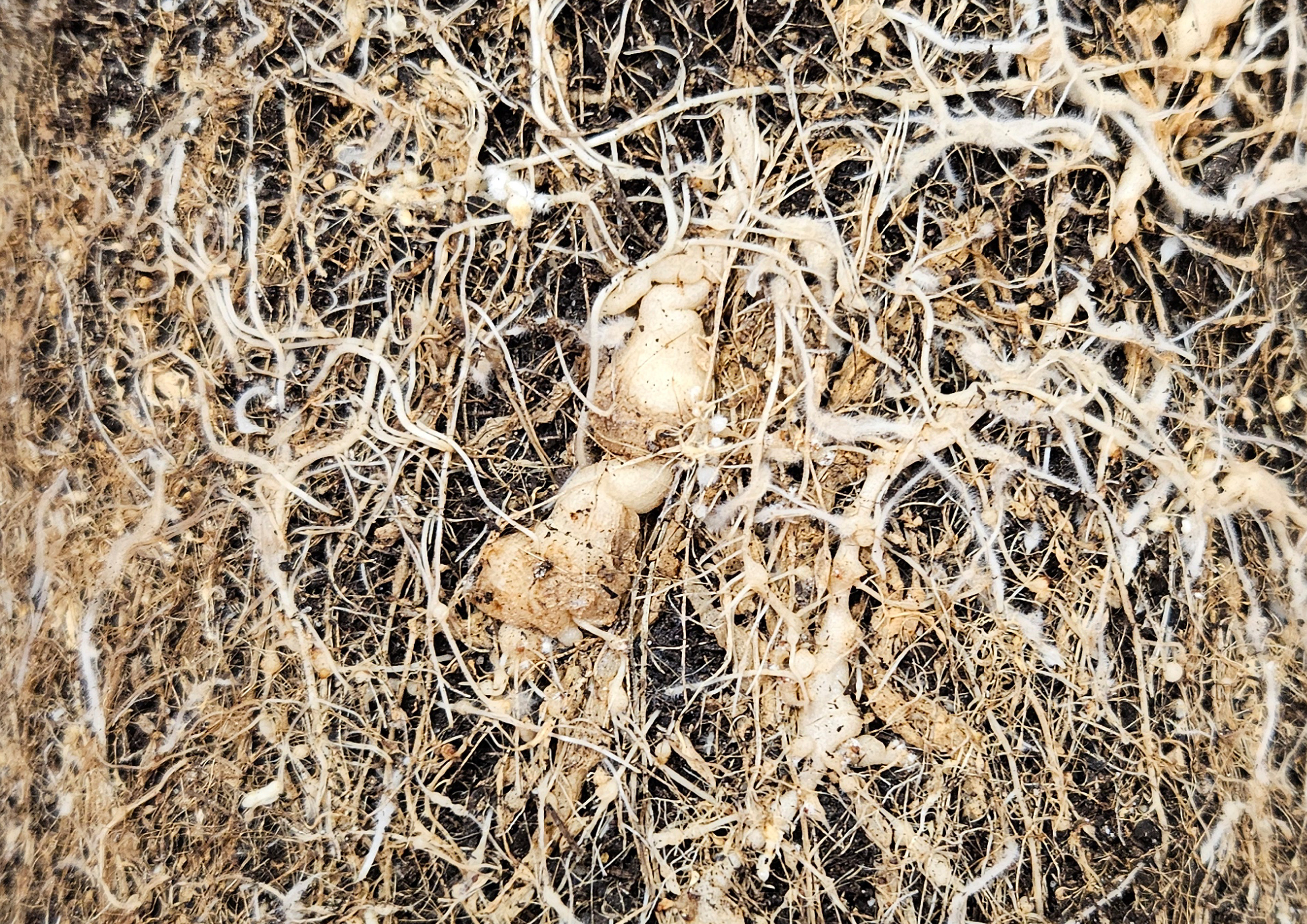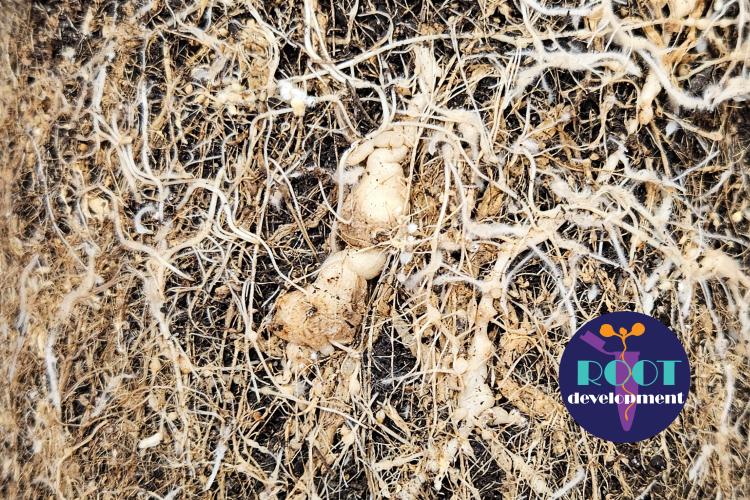A large proportion of the human and livestock food supply is provided by plants, since they make up about 80% of the food we eat. Plant research for crop productivity improvement tended to mainly focus on aboveground parts of the plant, often overlooking roots. However, roots have the important role of anchoring the plant and absorbing water and nutrients. In fact, it is estimated that 80% of all crop issues start with root/soil problems, and therefore the key to improve crop yields is a healthy development of roots. In particular, roots are susceptible to pathogenic fungi and nematodes, but these are often not noticed until the end of the season when growers can be faced with significant yield losses.
Plant parasitic nematodes (PPNs) cause severe biotic stress in plants and pose a serious threat to several crops worldwide. More specifically, nematode infections can lead to the formation of root galls or damage the root, as well as to aboveground symptoms such as leaf chlorosis and necrosis, possible wilting, stunted and patchy growth, and predisposition to various pathogenic fungi. They cause about 12% yield loss in agriculture annually, with root-knot nematodes (RKNs) being among the most harmful nematodes.
Root-knot nematode species are globally distributed and parasitize almost all vascular plant species. They invade the root and form nematode feeding sites(NFS) in the vascular cylinder by inducing a series of morphological, molecular and biochemical changes in plant root cells, causing severe biotic stress in plants. Moreover, NFS are the sole food source for growth and reproduction of these nematodes and form an important target for PPN control.
Current strategies to control these pests include cultural, biological, physical and chemical control strategies. Unfortunately, these strategies are often not efficient, economical favorable or ecological acceptable.
Hence, while it is a major challenge to control PPNs by conventional methods, a promising approach in the quest for environmentally friendly crop protection is induced resistance (IR). IR of a plant is defined as a state of reduced disease susceptibility induced by exposure to an external stimulus (beneficial microbes, natural compounds or synthetic compounds).
The main objective of this project is to identify compounds that can specifically protect plants from nematode infections by inducing resistance, without affecting normal developmental processes. The search for novel compounds that elicit IR or suppress susceptibility genes (genes needed for NFS formation) in plants can be done through high-throughput chemical screening, which relies on studying the response of biological processes to particular chemicals (“chemical genetics”). With the availability of automated liquid handling platforms and automated microscopy, collections containing thousands of compounds can be screened in the model system Arabidopsis thaliana.


